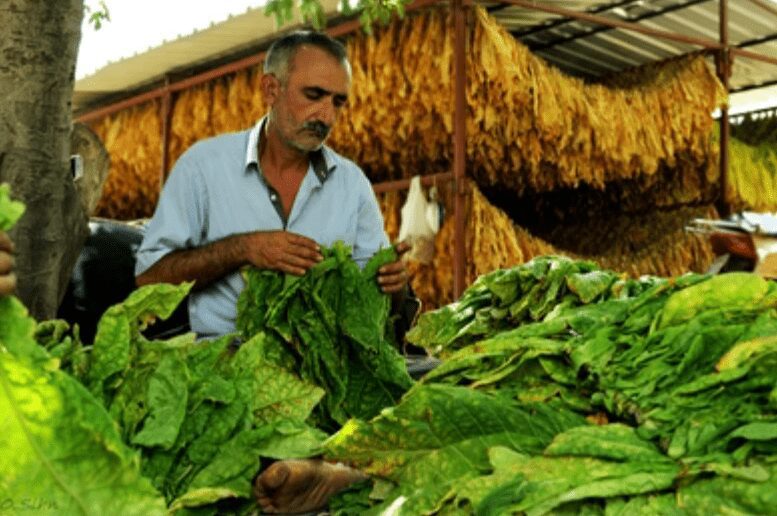Unveiling the intricate journey of a cigar, from seed to smoke, is a fascinating tale of craftsmanship and tradition. At the heart of each cigar is the labor of countless hands, the pursuit of perfect flavor, and a testament to the art of patience. Join us as we delve into the captivating process of cigar production.
Planting the Seed: The Birth of a Cigar
Cigar production is an intricate ballet that begins with the planting of tobacco seeds in nurturing seedbeds. A seed smaller than a flea is the genesis of every cigar. This tiny seed germinates and grows into a young, sturdy tobacco plant, destined to provide enjoyment to cigar enthusiasts worldwide. Nurtured in meticulously maintained seedbeds, these young plants thrive under optimal conditions, preparing for their destined purpose.
Harvesting: Selecting the Best Leaves
The mature tobacco plants then undergo a meticulous harvesting process. Workers with years of experience and a discerning eye handpick the leaves that have achieved the desired color and texture. It’s the keen observation and skilled touch of these workers that set the stage for the quality of the final product.
Curing: A Symphony of Flavors
Once harvested, the tobacco leaves are entrusted to the curing process, a delicate art of drying the leaves to reduce moisture while preserving their distinctive flavor and aroma. The curing method selected – whether air, fire, or flue curing – has a profound impact on the final product’s character. Curing is a delicate symphony, playing a vital role in the development of each leaf’s unique characteristics.
Fermentation: The Dance of Chemistry
Following curing, the tobacco leaves are gently gathered into bundles or ‘pilones,’ marking the start of the fermentation stage. In this process, the leaves engage in a dance of chemistry, delicately monitored for temperature and humidity, allowing natural chemical reactions to occur. The result is a smoother, more refined smoke, with the bitterness mellowed out and the flavors enhanced.
Sorting and Blending: Crafting the Perfect Balance
Post-fermentation, the tobacco leaves are sorted based on their size, quality, and texture. This is where the blender steps in, an artist who paints with flavors, crafting the perfect balance of wrapper, binder, and filler leaves. Each blend curated is a testament to the blender’s expertise, creating a harmonious medley of flavors, strength, and complexity.
Rolling: The Artisan’s Touch
Then comes the role of the skilled ‘torcedores’ or cigar rollers, whose experienced hands shape the destiny of each cigar. With a combination of filler, binder, and wrapper leaves, they roll the cigars to the desired size and shape. Their precision and expertise ensure each cigar is a masterpiece, perfectly constructed and packed.
Aging: A Testament to Time and Patience
The rolled cigars are then subjected to the passage of time. In a process akin to wine aging, they are stored in a controlled environment, allowing the blend of tobaccos to mellow and harmonize. The duration varies from months to years, adding to the character and depth of the cigar.
Quality Control: The Pursuit of Perfection
Throughout this elaborate journey, the cigars are subjected to rigorous quality control. Every step is closely monitored for consistency, and any deviation is promptly addressed. The cigars are inspected for construction flaws, draw resistance, and overall appearance, ensuring that only the finest products reach the consumers.
Packaging and Distribution: The Final Chapter
Once they pass through the gates of quality control, the cigars are ready for packaging. The final products are placed in individual sleeves or boxes, often lined with cedar to maintain humidity levels. These packaged cigars then make their way into the world, ready for retailers and consumers to savor the blend of craftsmanship and tradition they represent.
From the soil to the smoke, the production of a cigar is a journey marked by craftsmanship, tradition, and the relentless pursuit of perfection. Every puff of a cigar is an experience of these elements harmoniously coming together, offering a moment of pure, unrushed pleasure.
At https://richsmoking.com/, we are passionate about providing you with a deeper understanding and appreciation of the art of cigar making. Trust us to guide you through the intricate world of cigars, helping you discover and enjoy the finest smokes.
Frequently Asked Questions
1. How long does it take to produce a cigar?
From seed to finished product, it takes at least two to three years to produce a cigar, with much of that time dedicated to growing, curing, fermenting, and aging the tobacco leaves.
2. Why are cigars so expensive?
The price of a cigar reflects the costs of growing the tobacco, the manual labor involved in the production process, the time required for aging, as well as taxes and import fees.
3. Are all cigars made by hand?
While many premium cigars are hand-rolled by skilled artisans, some cigars are also machine-made, especially cheaper, mass-market varieties.


